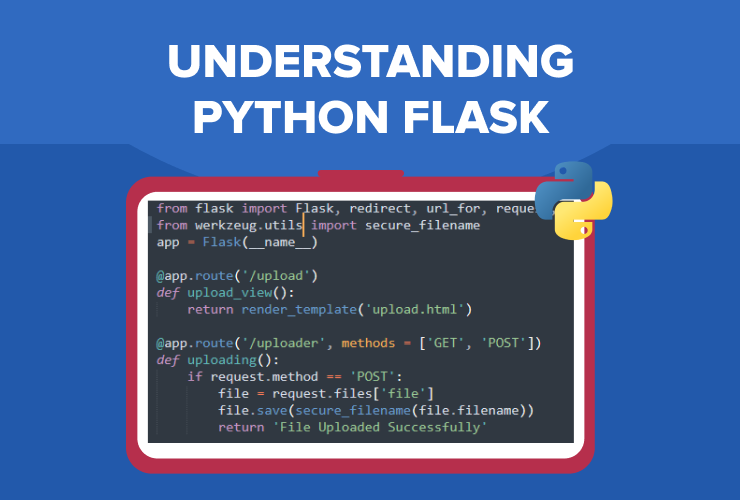python flask tutorial
python flask tutorial
Python Flask Tutorial
Flask is a micro web framework written in Python. It is ideal for building small to medium-sized web applications, APIs, and RESTful services. In this tutorial, we will explore the basics of Flask and build a simple web application using it.
Step 1: Install Flask
To start with Flask, you need to install it first. You can do this by running the following command in your terminal:
pip install flask
This will download and install Flask on your system.
Step 2: Create a new project
Create a new directory for your project and navigate into it using your terminal. Then, create a file called app.py where you will write your Flask code.
Here's what the initial structure of your project might look like:
myflaskproject/
app.py
templates/
index.html
static/
style.css
Step 3: Create a new app
In your app.py file, import Flask and create an instance of it:
from flask import Flaskapp = Flask(name)
Here, we are creating a new Flask app with the name myflaskproject.
Step 4: Define routes
Routes in Flask are used to map URLs to specific functions. In your app.py file, define two routes:
@app.route('/')def index():
return "Hello, World!"
@app.route('/hello/')
def hello(name):
return f"Hello, {name}!"
Here, we have defined two routes: one for the root URL (/) and another that takes a name as an argument.
Step 5: Run the app
Finally, run your Flask app using:
python app.py
This will start your development server. You can access your application by navigating to http://localhost:5000 in your browser.
Conclusion
In this tutorial, we have learned how to create a new Flask project, define routes, and run the application. Flask is a powerful and flexible framework that makes it easy to build web applications. With its small size and flexibility, it's an ideal choice for building simple web applications.
Here are some key takeaways from this tutorial:
Flask is a micro web framework written in Python. To create a new project, import Flask and create an instance of it. Routes in Flask are used to map URLs to specific functions. You can define multiple routes with different parameters. Run your Flask app using thepython app.py command.
Additional Tips
Always start with a clean slate. Create a new virtual environment or directory for each project you start. Keep your code organized by separating concerns (e.g., templates, static files). Learn about templating and Jinja2, as it can greatly simplify your web application development process.Flask is a powerful tool that can help you build simple web applications. In the next tutorial, we will learn how to work with databases in Flask.
Is Python Flask easy?

I'd be happy to respond in English and provide a detailed answer!
Python Flask is a micro web framework written in Python that enables developers to build robust and scalable web applications quickly and efficiently. In short, yes, Python Flask can be considered "easy" for several reasons:
Lightweight and Flexible: Flask is a lightweight framework that allows you to write simple and efficient code. It's designed to be flexible, so you can add or remove features as needed. Easy to Learn: Flask has a minimalistic syntax, making it easy for developers new to web development to learn and start building applications quickly. The core of the framework is straightforward, with most operations handled through decorators (small functions that wrap other functions). Small Codebase: The official Flask documentation states that "Flask itself is only 15,000 lines of code." This means there's less code for you to learn and understand, making it easier to get started. Built-in Support for Common Tasks: Flask provides built-in support for tasks like routing, request parsing, response rendering, and error handling. These features simplify the process of building web applications. Extensive Ecosystem: The Python world has an impressive array of libraries and tools that work seamlessly with Flask. This means you can leverage these libraries to perform complex tasks or integrate third-party services into your application. Large Community Support: Python Flask has a massive community of developers who contribute to the framework, create extensions for it, and share knowledge through documentation and tutorials. Having a supportive community behind you makes learning and troubleshooting easier. Extensive Documentation and Resources: The official Flask documentation provides an excellent starting point for new users. Additionally, there are numerous resources available online, including tutorials, blog posts, and video courses, that can help you learn and master Flask. Cross-Platform Compatibility: Python is a cross-platform language, which means that applications built with Flask can be run on different operating systems (Windows, macOS, Linux) and platforms (e.g., Heroku, AWS). Modular Architecture: Flask's modular design allows you to build your application as a collection of small, independent modules. This makes it easier to manage and maintain large projects. Rapid Development Cycles: Flask enables rapid development cycles by providing a fast, iterative development process. You can quickly test ideas, make changes, and see the results in real-time.In conclusion, Python Flask is an excellent choice for web development due to its ease of use, flexibility, and extensive ecosystem. While it's not perfect, Flask provides a solid foundation for building robust, scalable, and maintainable web applications.





























